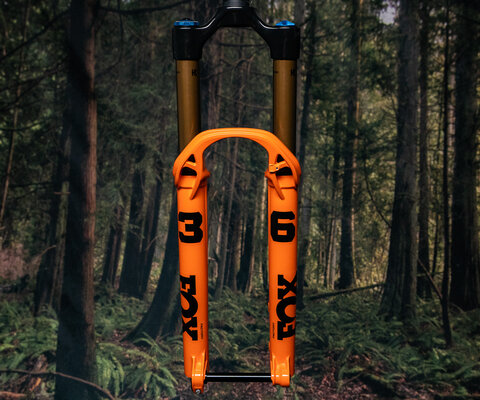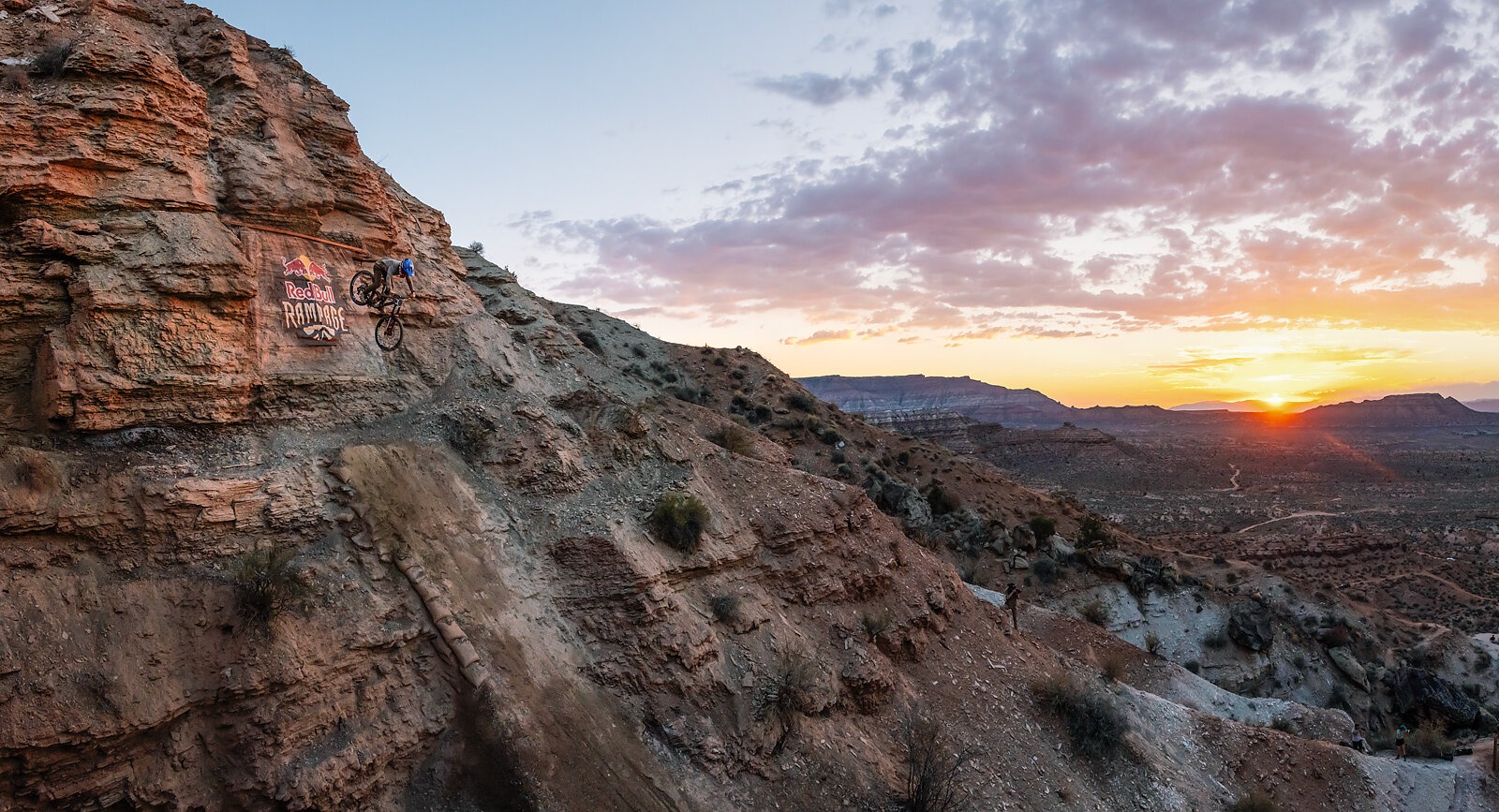
Desert Ascension Triumph and Challenge at Women's Rampage Debut
Words by Nicole Formosa
What a difference a year makes.
Almost exactly 12 months ago, the world’s best female freeride athletes were at the lowest point in their years-long quest to compete at Red Bull Rampage, the top competition in freeride mountain biking, held outside Virgin, Utah, on some of the biggest, most consequential terrain on earth. Red Bull had canceled Formation, a women’s progression session widely perceived to be a pathway to Rampage, and Rampage was about to get underway without any women on the invite-only athlete roster. Many women were losing hope that Rampage would ever be a professional possibility.
On Thursday, those emotions were finally replaced with elation, excitement, and hard-earned success as the first-ever women’s field competed in the event’s 23-year-history, four months after Red Bull announced the event would add a long-awaited women’s category and a second day dedicated solely to the women’s competition.
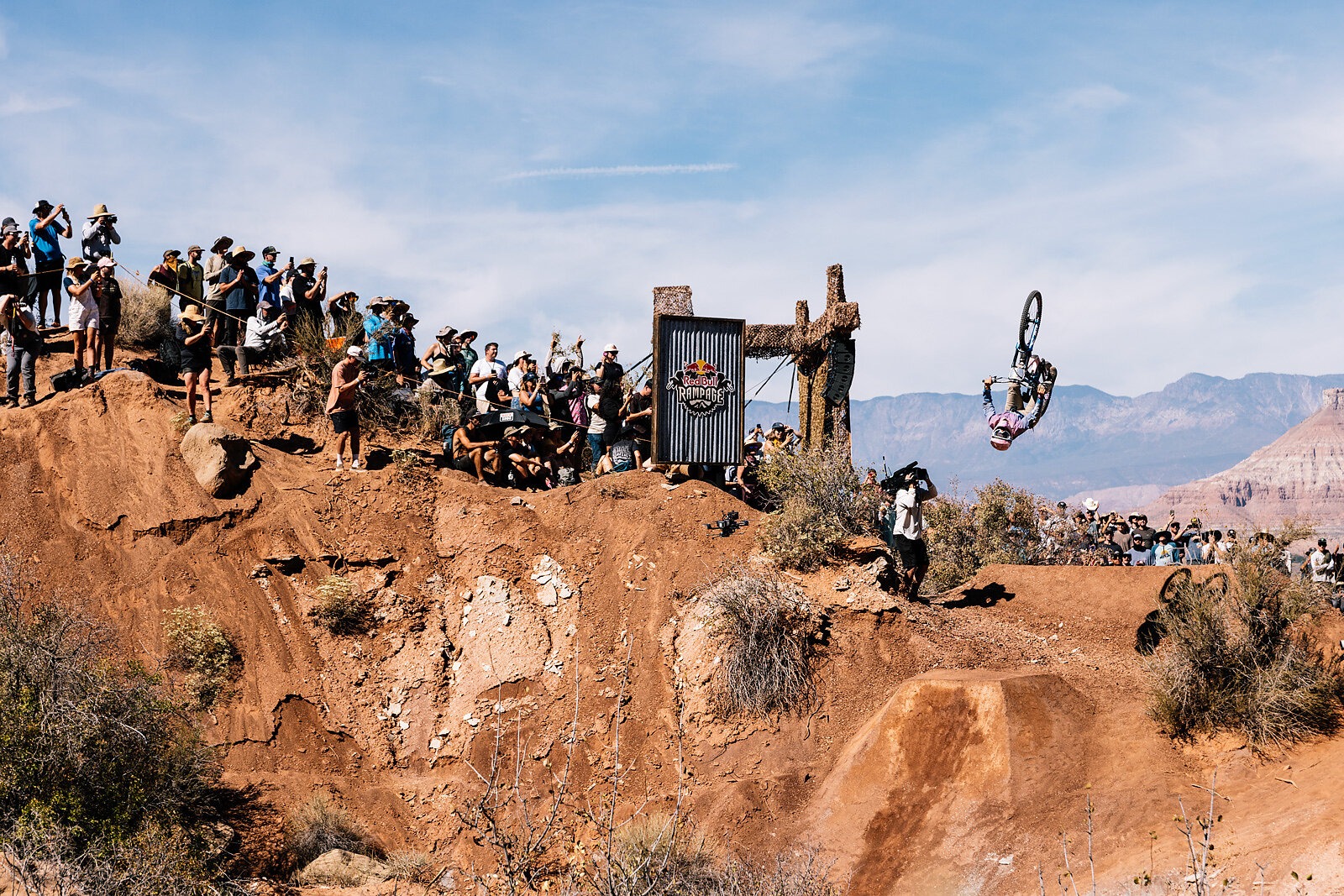

With equal pay on the line ($100,000 for first place) and a never-been-used venue on which to build and compete, Robin Goomes, Casey Brown, Vinny Armstrong, Georgia Astle, Vero Sandler, Vaea Verbeeck and Chelsea Kimball—who’d spent 10 days digging new lines from scratch into a blank, rocky-cliff canvas and guinea-pigging audacious drops, chutes and jumps—made history as they shattered one of the last glass ceilings in competitive mountain biking. (Cami Nogueira did not compete after sustaining a broken nose and concussion in a huge crash earlier in the week during practice, and Hannah Bergemann pulled out in September after tearing her Achilles tendon while training on a drop back home in Bellingham, Washington).
“Rampage is, to me, the biggest event in mountain biking,” said Kiwi Robin Goomes, 28, who won Thursday’s inaugural women’s competition. “For so many years, we’ve all watched it and dreamed of being here so it’s a dream come true. I feel so blessed to be here.”
After a nerve-racking two-hour wind delay, Goomes rolled in first from the start deck, having drawn the No. 1 plate at the first riders’ meeting, and stomped a run that included a steep technical entrance chute, a backflip off an exposed ridgetop trick jump, a 41-foot tip-to-tip jump with a blind takeoff and a second backflip on the final trick jump, netting her a score of 85 that would stand throughout the afternoon. She also won best trick.
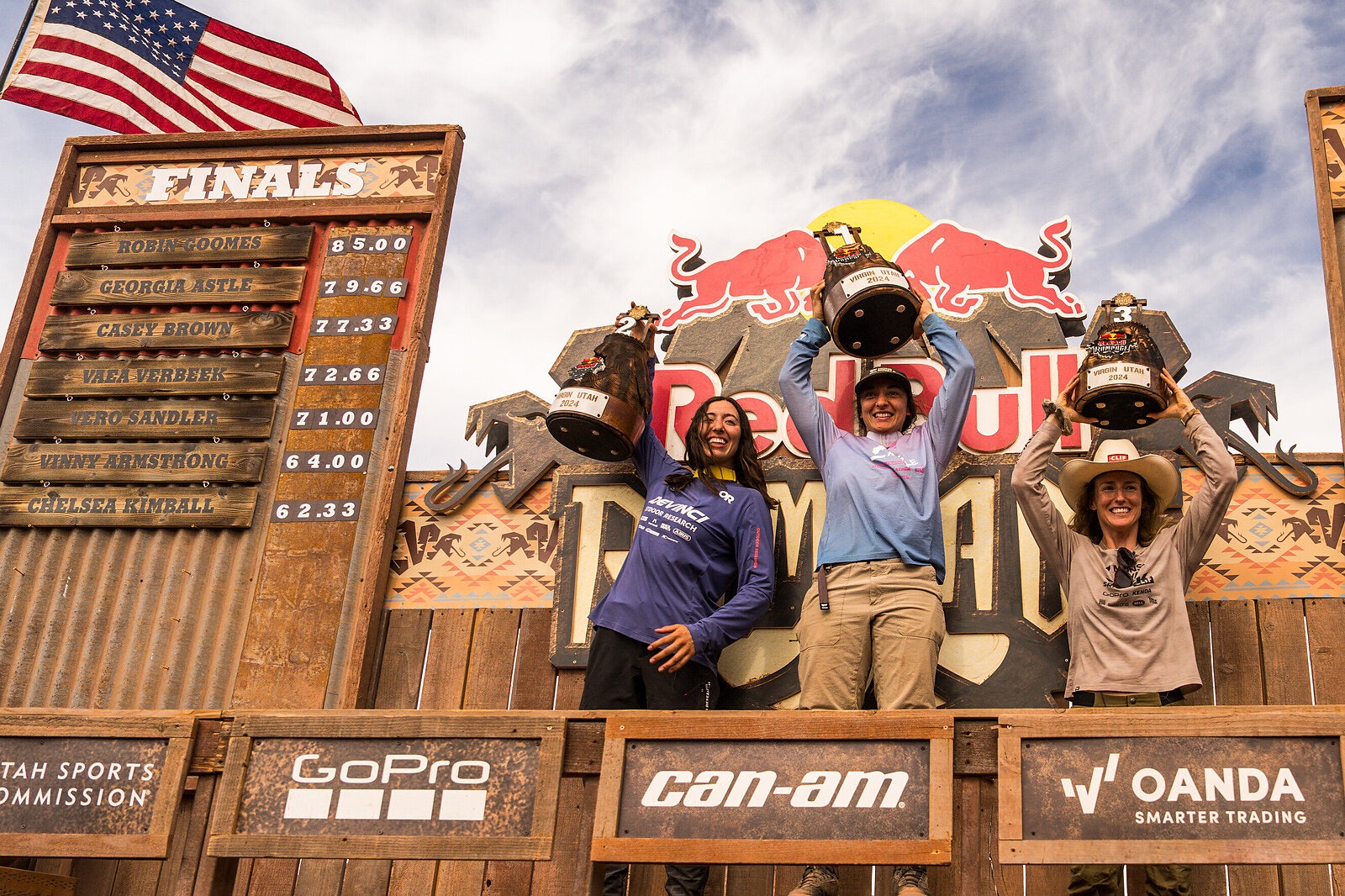


“It was unreal,” said Goomes, whose career skyrocketed after she attended Red Bull Formation in 2021, becoming the first female to land a backflip in competition at Crankworx later that year and winning the first-ever women’s Slopestyle World Championship-level race earlier this year. “I feel like I was in such a flow state. I basically blacked out top to bottom and it wasn’t until after I landed the second flip that it hit me: I just did this, and I was so stoked.
“Rampage is the craziest event, it’s higher stress than anything I’ve ever done,” she said. “There’s so many other factors, you’ve put two weeks into building your line and you’re so fatigued, the wind is there and you’re just battling all these things you can’t control, so all you can do is focus on what you can control and that’s riding your line. I was just trying to take it step by step, feature by feature.”
Brown dropped in second, marking a huge moment in her career. She has been vocal about her desire to compete in Rampage for more than a decade—on her 2010 rider résumé, Brown listed “Red Bull Rampage” in her plans for the following year and she dug for eight days on Bas van Steenbergen’s team in 2018—and has been working toward the goal nearly half her life, while breaking barriers in freeride and inspiring legions of other riders along the way.
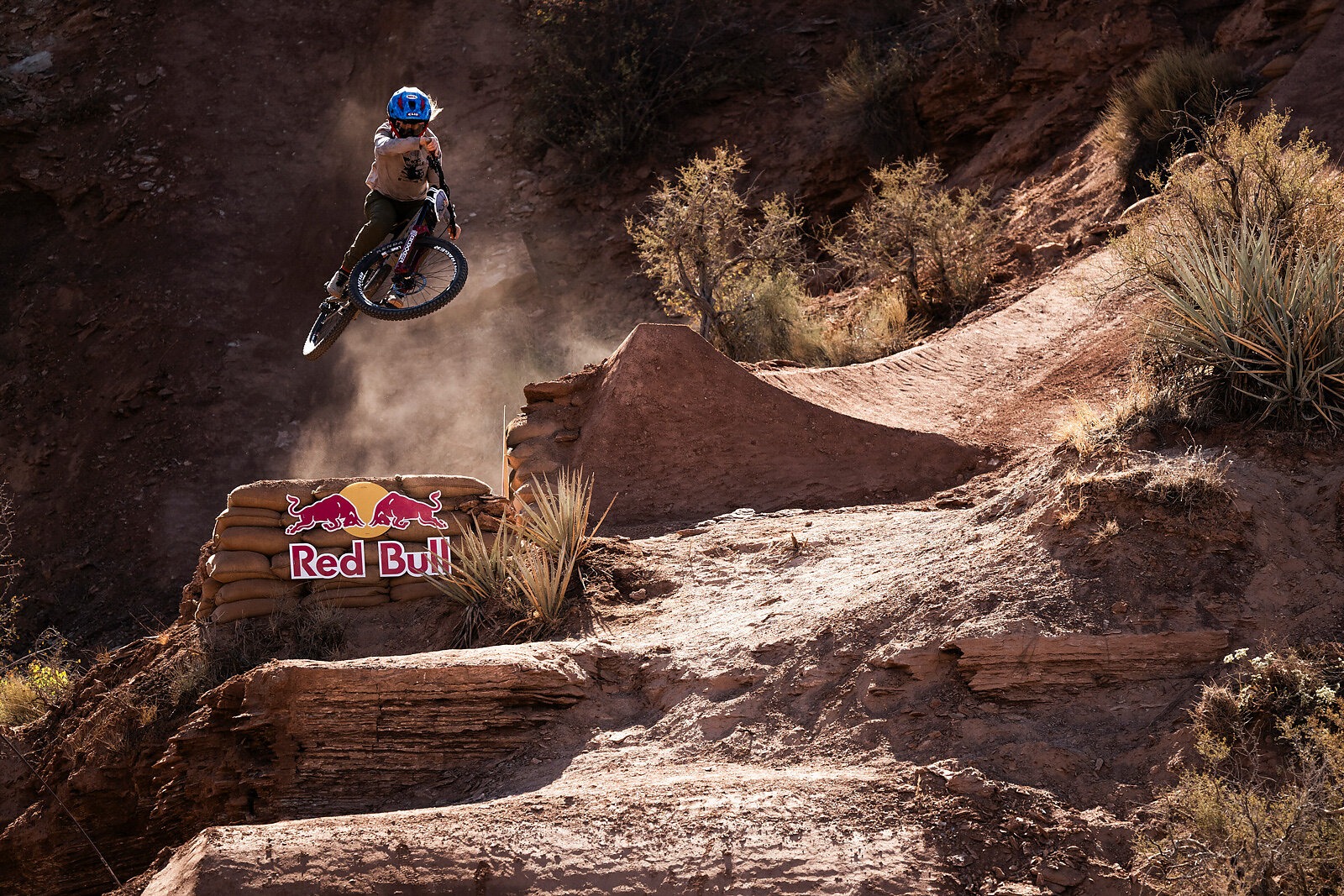

“It was almost everything I wanted to achieve,” Brown said of her run. “I feel like the intensity of doing a Rampage run is so new to everyone including myself, that you can dream up as much as you want and what you can pull off and I think I did as best as I could with the pressure I had. We did year one and now we build on that. I feel like everyone learned so much during the last 10 days, building and testing, I feel like all these women grew a lot and learned how to trust themselves a lot more than before the event. You can only get better from here.”
Brown was the first competitor to complete a top-to-bottom run in practice, and put together a line that started with a steep S chute, leading into the “Laundry Chute,” an exposed, sketchy, techy rolldown that required precise braking control on the entry, followed by rollers, hips, and a final stepdown into the trick jump. She placed third and also took home the rider-voted McGazza Spirit Award, named after the late Kelly McGarry.
Astle, a former racer who dug for Brown at Formation in 2021 before attending as a rider the following year, took second place with a super-clean run that shared the same 41-foot Slot Drop with Goomes. Astle was originally an alternate and got the call to fill in for Bergemann last month. Despite her last-minute invite, she was clearly prepared—Astle’s run was methodical and ended with a perfect suicide no-hander on the final trick jump, a showing that earned her the nickname “The Alternator,” said Brown.
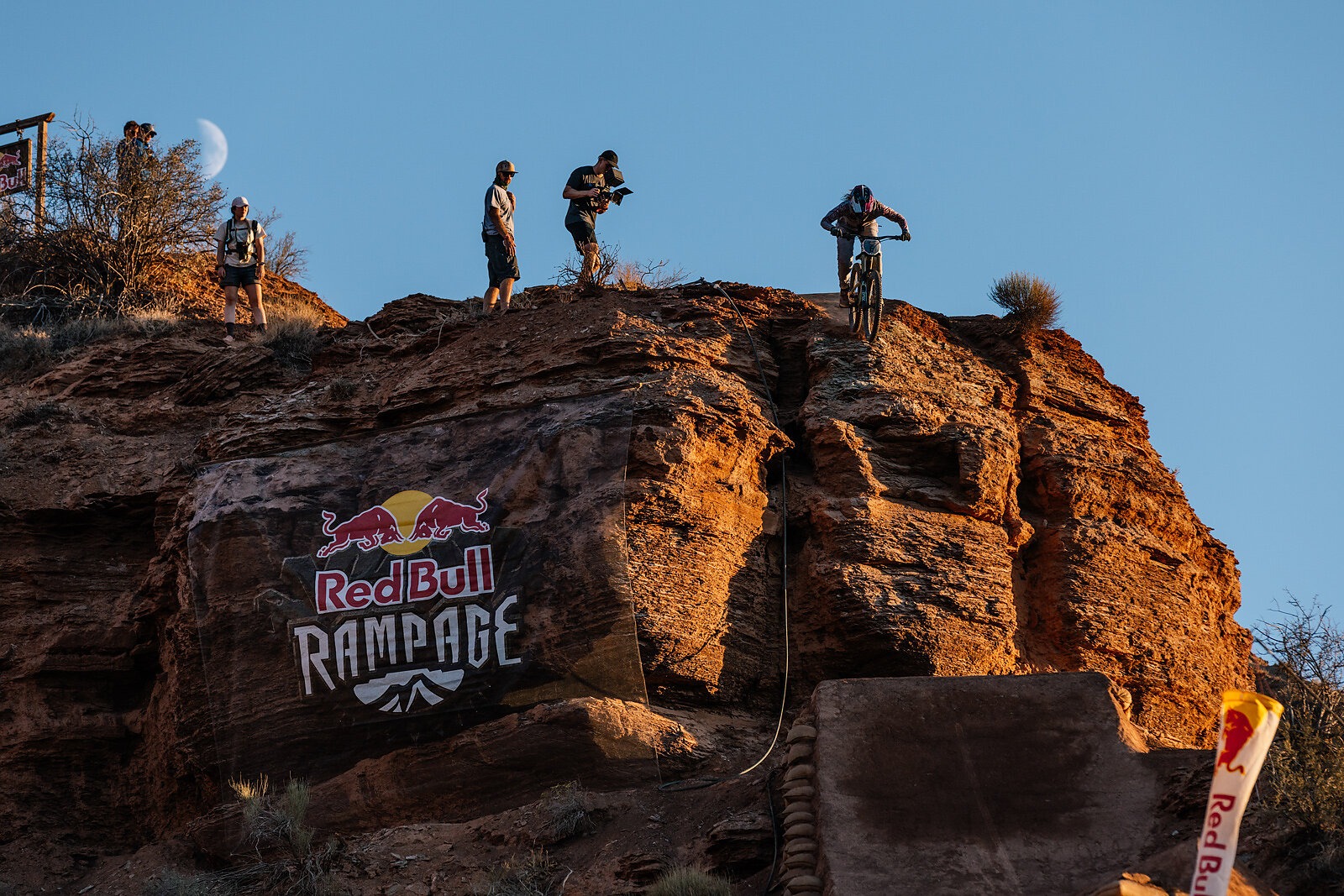
Verbeeck won the Trailblazer Award for her inventive line loaded with variety: a triple drop, steep natural chutes, exposure and high- and low-speed sections, while Sandler and Armstrong both showcased their signature style and creativity throughout their lines and on the final trick jump, where Armstrong’s huge whip and Sandler’s suicide no-hander fired up the crowd.
Kimball, the sole American competitor, dropped in last and steadily ticked off features before crashing on her middle drop. She got up and finished her run, greasing the biggest drop on the mountain, the 51-foot “Blood Drop,” in front of a rowdy throng of spectators waiting below. The wind picked up after first runs, and only Kimball and Goomes went back up for seconds, but ultimately Kimball was swept sideways in the same spot at the middle drop and crashed again.
As the ladies were dropping in up top, approximately 600 feet below, Katie Holden and Chris Worden watched the start to the historic day together at the bottom of the venue, the din of crowd cheers and announcer commentary drowned out by emotion.


“I feel so much pride. Honestly when Robin dropped, I totally lost my shit, like full ugly-cry,” said Holden, a former freerider and visionary behind Formation as a way to set up female freeride athletes with more time digging and riding time in the desert to prepare them for eventual Rampage participation. Holden has dedicated years to pushing for equity in women’s freeride, and Worden, who worked in marketing at Red Bull at the time, was pivotal in getting the first Formation off the ground in 2019.
“It was really, really hard to get to this point,” said Holden. “Obviously there’s been so many incredible moments along the way and through the adversity, I feel like I personally have learned a lot and matured a lot and I feel a lot braver in everything that I do. I don’t think that the community would be as tight or as resilient as it is without having faced that adversity.”
That resilience was clear in the days leading up to Rampage, when the athletes supported each other relentlessly, despite the high-stakes, lucrative competition. They collaborated on builds and cheered each other on as they guinea-pigged features, something most had never done before.
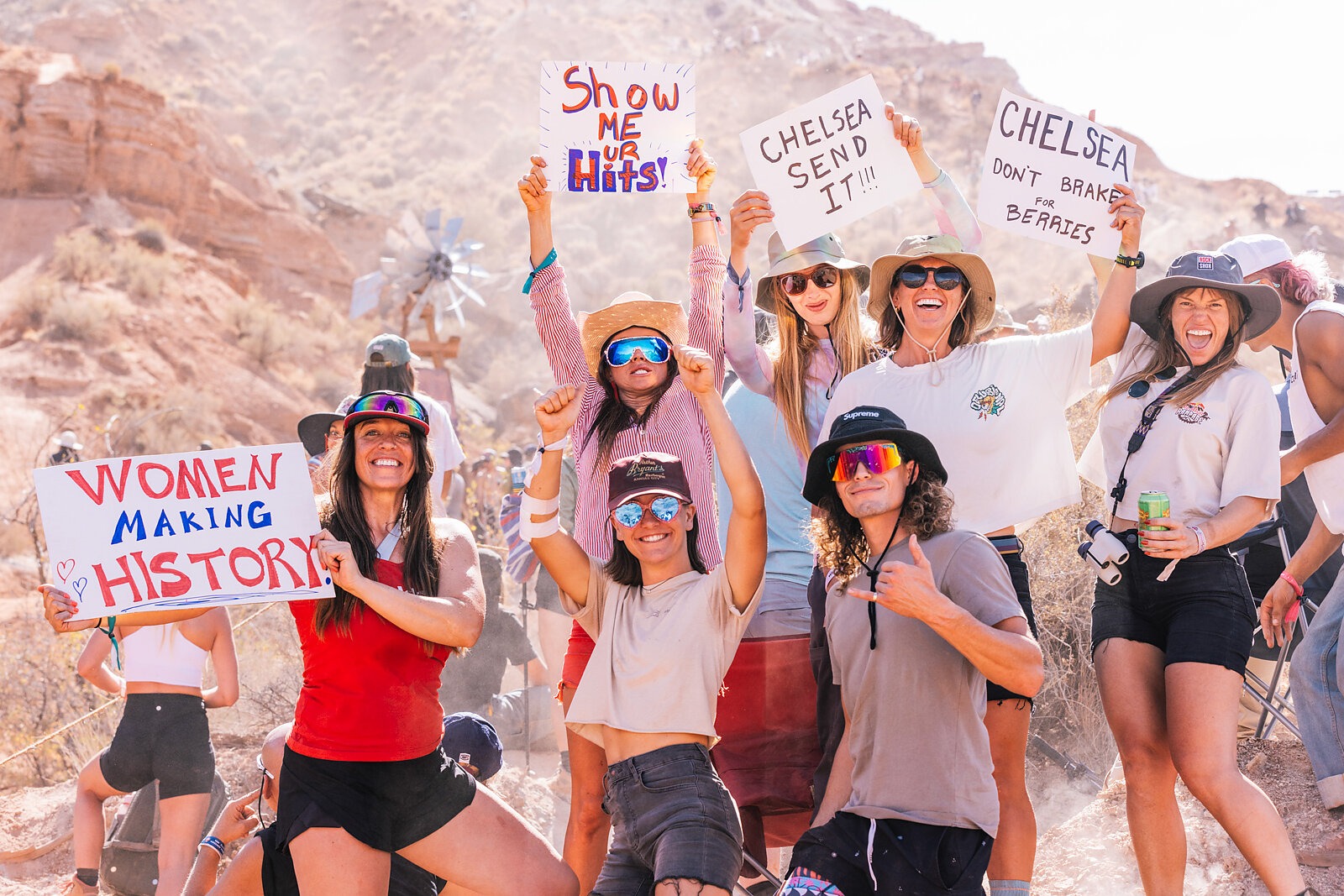
“I think we learned a lot,” Sandler said. “The fact that our venue was really small and there wasn’t much room for lines all over the venue—it was mostly heading down that main ridgeline—meant that there was a bit of clashing going on, people working out how they could collab, how they could build features that don’t clash with other peoples’ features, but the clashing pretty much got figured out straight away, and since then everyone’s stoked, everyone’s looking out for each other and working together. I think it’s much more of a working-together environment than a general competition. That’s sick.”
One of the biggest factors was unexpected speed—the venue was so steep that after initial testing, many riders had to add catch berms and runouts into their lines to ensure they could slow down enough between features. The magnitude and potential consequences of the lines at Rampage cannot be overstated—the raw, exposed terrain means one overshot landing could result in a massive fall and serious injuries. On Tuesday, male competitor Clemens Kaudela crashed in practice and was airlifted from an exposed, rocky perch at the venue to the St. George Regional Hospital. He later posted on social media that he was “in one piece” but had sustained 4 fractured vertebrae and a dislocated hip.
The relief following Thursday’s women’s finals event was palpable, as was excitement for the future. Adding women into the mix brought new energy and attention to the event, drawing international and mainstream press coverage and a large crowd of spectators keen to witness such a monumental moment in mountain bike history. Pioneering female freeriders Katrina Strand, Lisa Lefroy, and Claire Buchar watched as the current crop of riders reached the pinnacle they had also been striving for 20 years ago, while up-and-comers looked on to learn how they might someday return as a competitor.
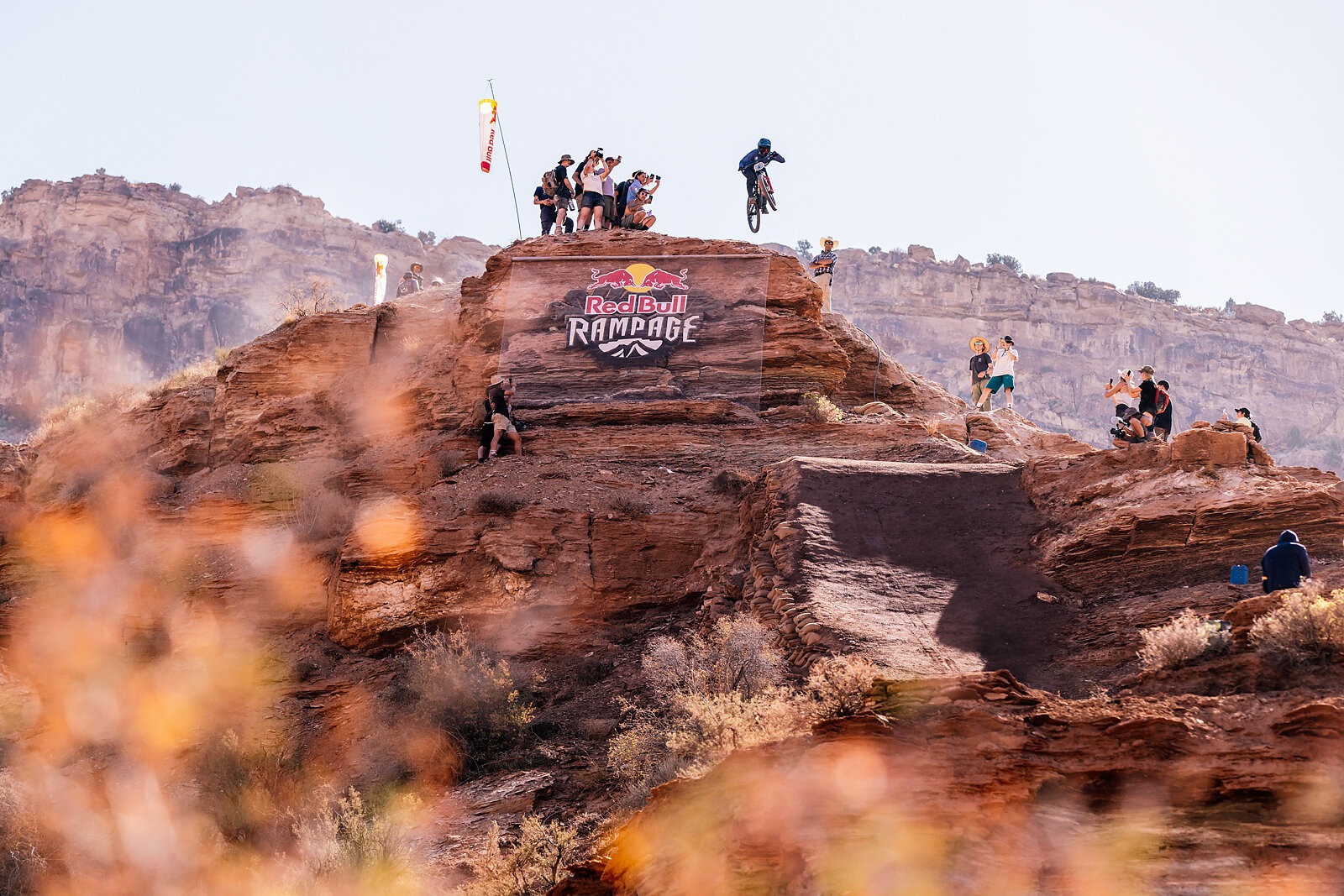
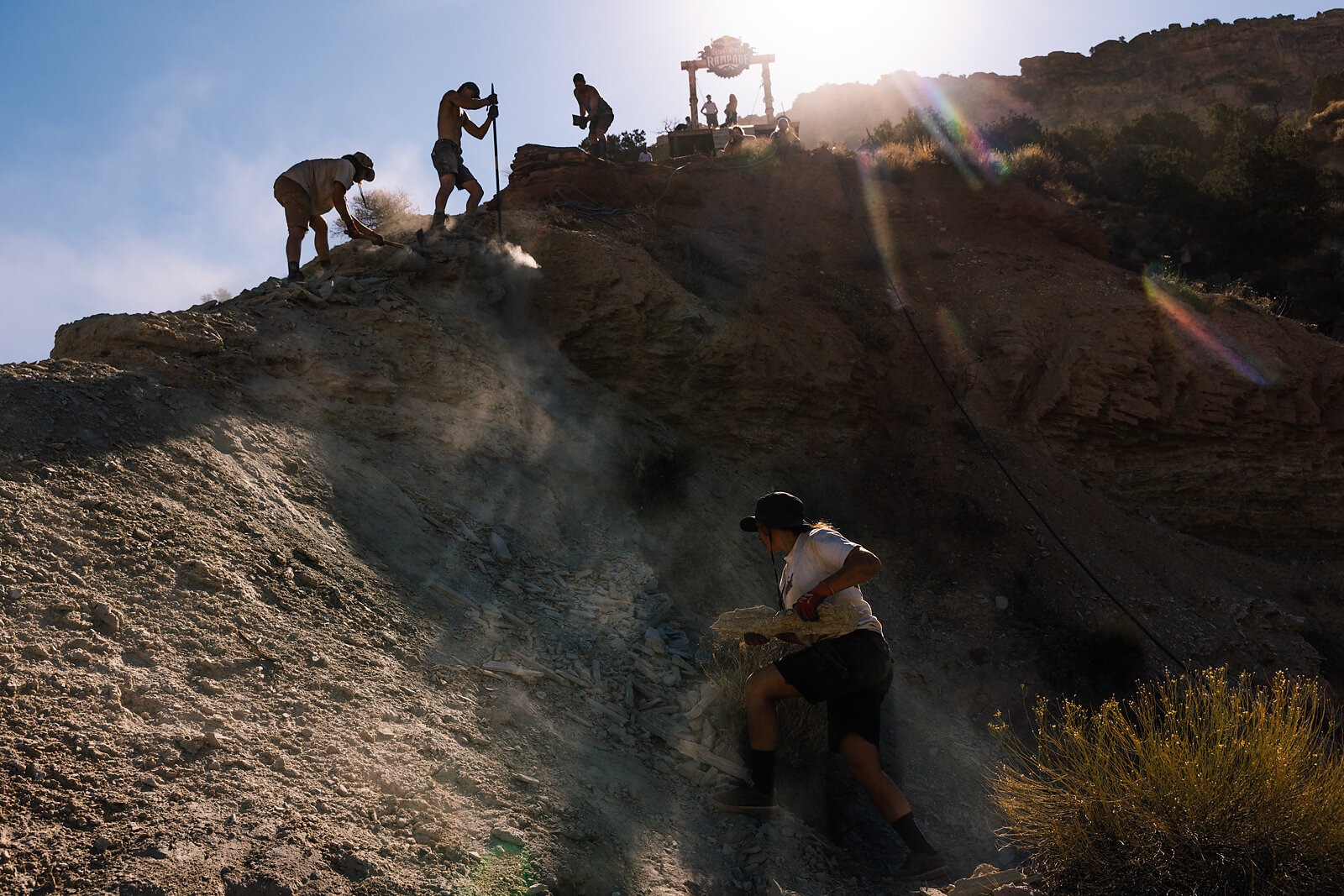
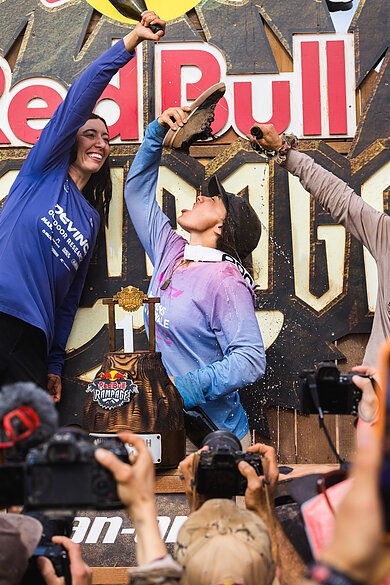
And while Thursday’s moment was a long time coming, it only feels like the beginning, said Holden.
“Now it’s a known thing, it’s a target on the map, you can get your sponsors to invest in it, you can invest your time, you can train properly over the course of a year and really set yourself up for success,” she said. “I think just having a path to work on, we’ll see some serious acceleration and support. I also think now is the opportunity to work on the development of the community on all levels to feed them forward in the sport whether it’s Rampage or whatever else they want to do, creating multi-dimensional athletes that can stand on their own, can negotiate business, work with different revenue streams and can do media and communications and all these things that are important parts of being an athlete.”
For the event itself, there will hopefully be room in the future to grow the field of invited athletes to beyond this year’s eight, to broadcast the women’s event live, as opposed to tape-delay, to further build up the anticipation, and to integrate women into other aspects of the event, like judging. This year, Rampage brought on Buchar and freerider Blake Hansen to shadow-judge so they can sit on the judge’s panel in the future.
But, for now, the overwhelming feeling from the venue is one of a major mountain climbed, at long last.
“It feels like a big success,” said Verbeeck. “We’ve worked a lot for this to happen and for this moment. It went quiet for two years, we just thought it was pretty hopeless, we were waiting around, following up, we weren’t getting answers so we weren’t sure if [Red Bull] were brewing for it to happen. We did not want to settle for less. Formation was an amazing concept, but it was not the end of the road. Rampage is very much the epic top end of the sport, so we wanted that to be it for the ladies. For it to finally happen is a huge win and I can’t wait to see what it grows into in the future.”

